
The highlights of our tour to Sri Lanka were many and varied – some were significant outings, such as the visit to Sigiriya Rock Fortress and others were the smallest of experiences, such as discovering the source of cinnamon. With too many to mention, I have selected a few to describe in detail as a follow up to my recent tour summary post.
Sigiriya Rock Fortress
Our visit to Sigiriya Rock Fortress coincided with a public holiday. As well as being a Sunday, our guide expected large crowds at this popular destination for locals and tourists. We therefore set off early to beat the queues.
As we left the coach and started to walk, the rock gradually appeared as this massive monolith of granite rising 180m from the surrounding jungle landscape. We were told in advance that it would be quite a climb, but being faced with the sheer rock walls, it looked quite daunting.
Sigiriya Rock Fortress, also known as the Lion Rock on account of its shape, dates back to the reign of King Kasyapa (477-495 AD), who chose this easily defended site as his new capital. After the king’s death, the site became a Buddhist monastery until it was abandoned in the 14 century. In 1982 it became one of the many UNESCO heritage sites in Sri Lanka.

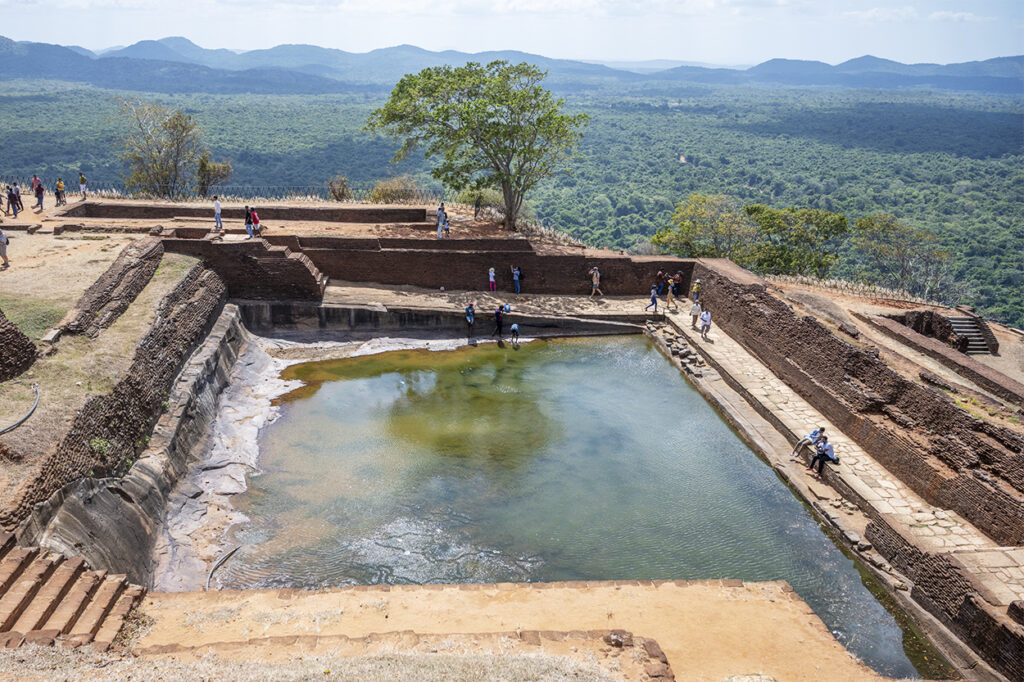

Taking up the whole of the rock’s plateau surface, the fortress comprised the main palace, terraced palace gardens and pools – essential components of the water management system. With 360 degree views of the surrounding flat landscape, it is easy to understand the reason for it being selected as a fortress.
The climb is in two main stages, the first being a series of rock ‘staircases’ accessed at ground level through the water gardens and across a moat.


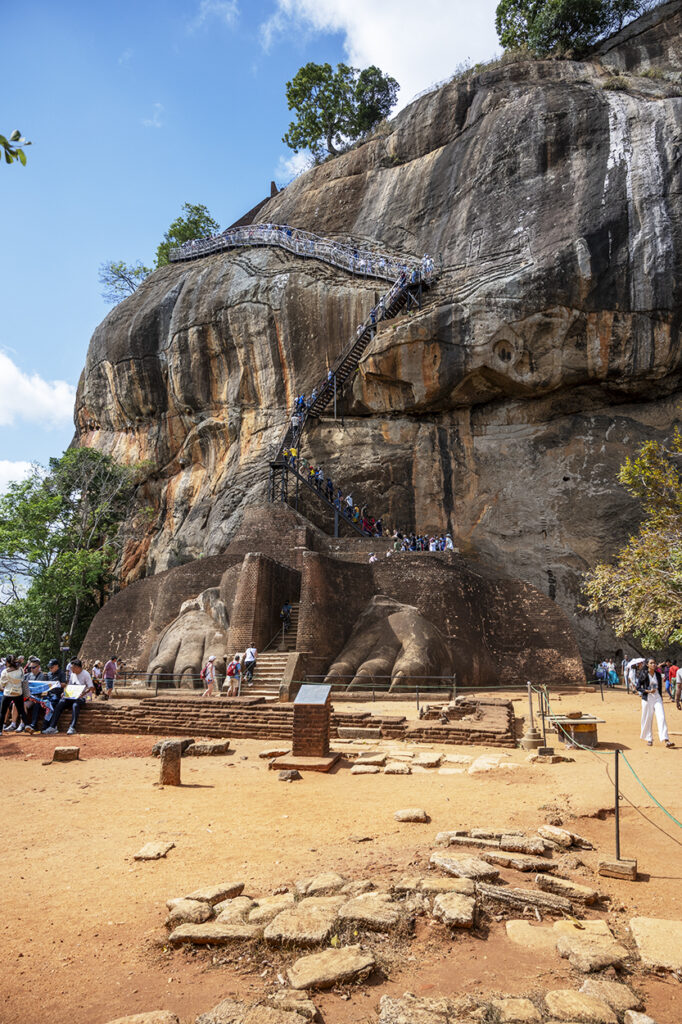
On a flat platform at the base of the next stage, there are two large carved lion’s feet through which a series of metal flights of steps cling to the vertical side of the rock to deliver visitors to the top of the rock.
Before setting off on the second stage, we could see a continuous line of visitors making their way up the zig zag of the stairs. As we joined to line for the slow climb, we could only hope and pray that the structural calculations had accurately taken into account the weight of all those people.
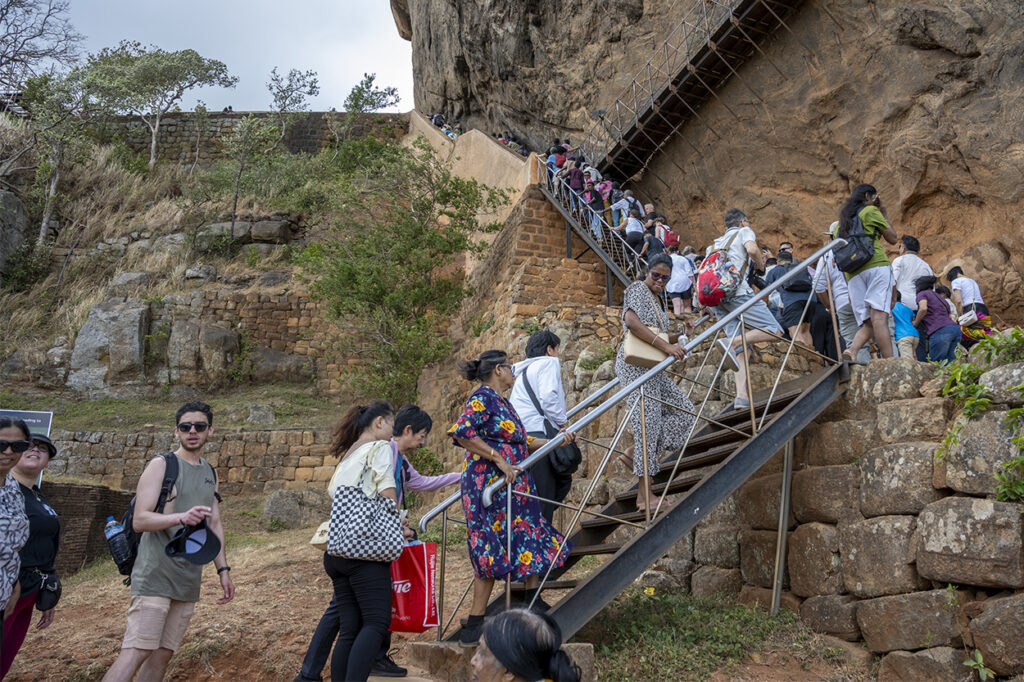
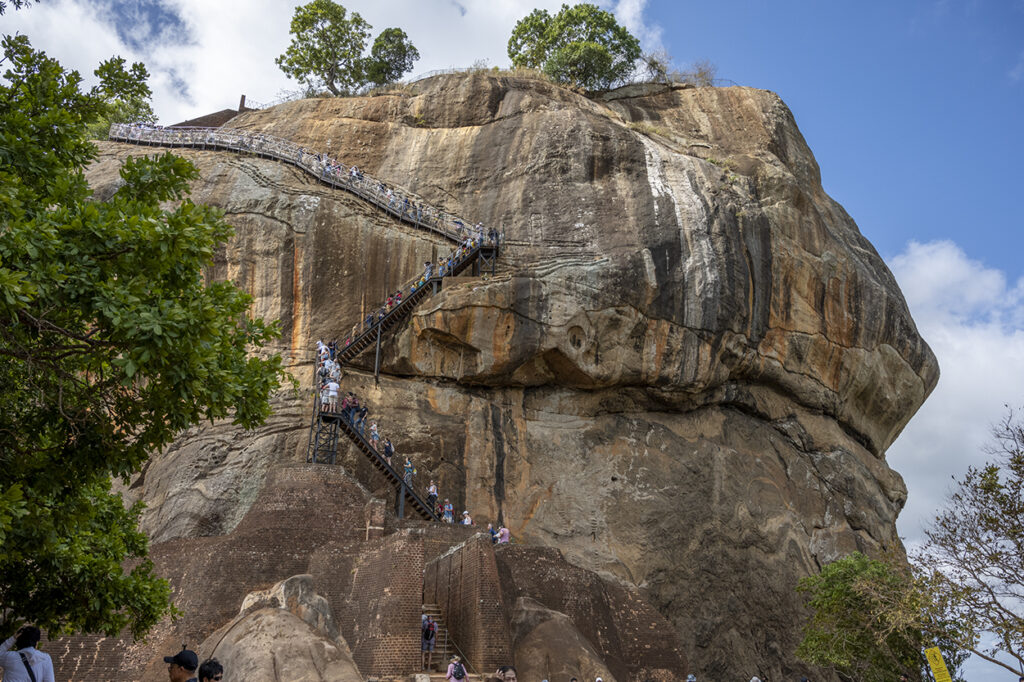
After a slow climb, we arrived at the top to enjoy the magnificent views and to wonder what life would have been like all those centuries ago.
On the way back down, we had one more stomach churning experience – the climb up and down a spiral stair that seemed to defy gravity. At the top of this was a gallery of frescoes depicting naked chested women (no photography allowed).
Once back at ground level we were told by our guide that the climb involved 2282 steps, but other online sources suggest 2400. Whichever is correct, we felt our calf muscles the next day after such a not-to-be-missed visit.
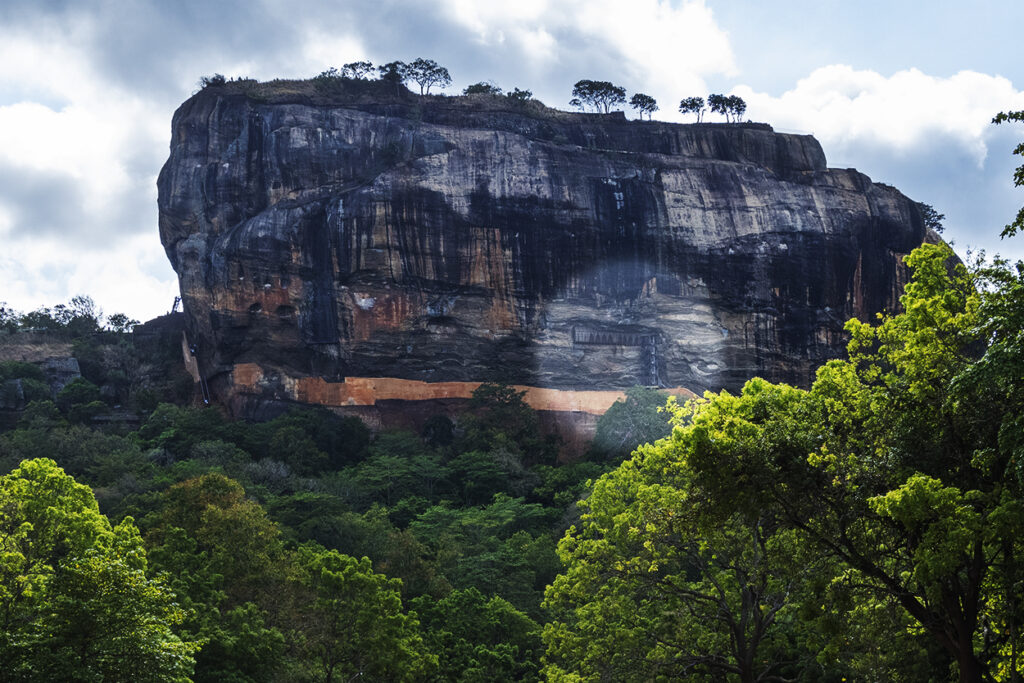
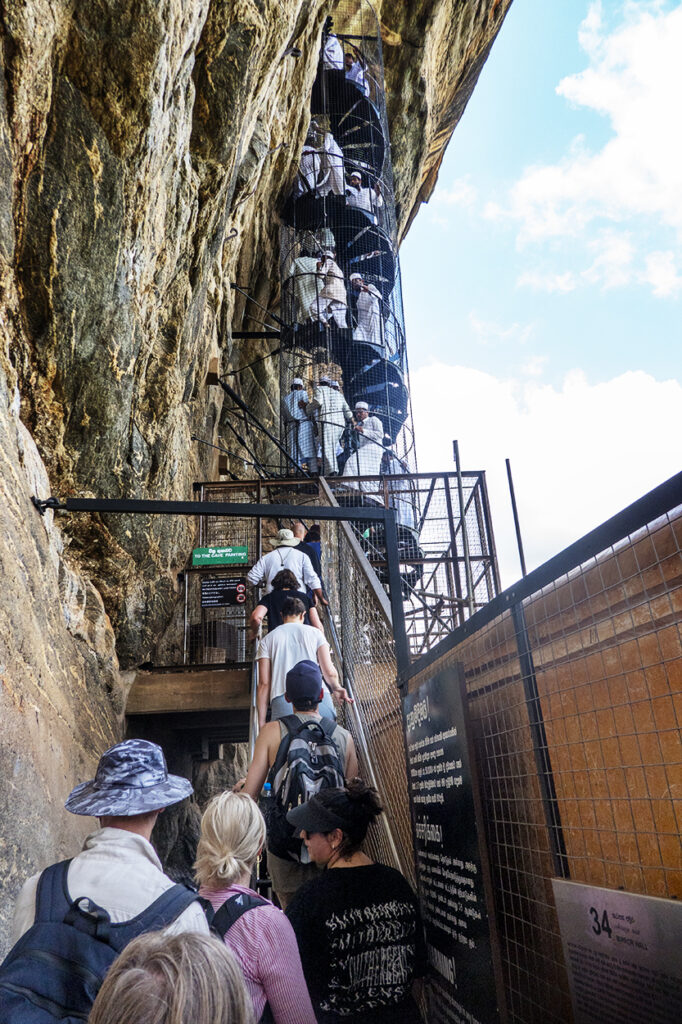
I still wonder at how the fortress was constructed all those centuries ago and particularly how and why they painted the frescoes in the middle of a vertical rock face.
Scenic train journey
Although I am calling it a scenic rail journey, it is a scheduled journey from Colombo to Badulla with the stretch between Kandy and Ella taking up to 10 hours. We joined the train at Kandy for the four hour trip to Nuwara Eliya, the centre of the tea plantation region of the country.
While waiting for our train at Kandy, we were given the chance to view the control room (signal box). Always willing to give anything a go, I managed to flex my muscles to change a few of the signals. This was under the watchful eye of the controller, so I was confident of not being the cause of a major rail accident. The system is exactly as it was when the British installed it all those decades ago – the longest cable from the levers to the signal is over one kilometre!
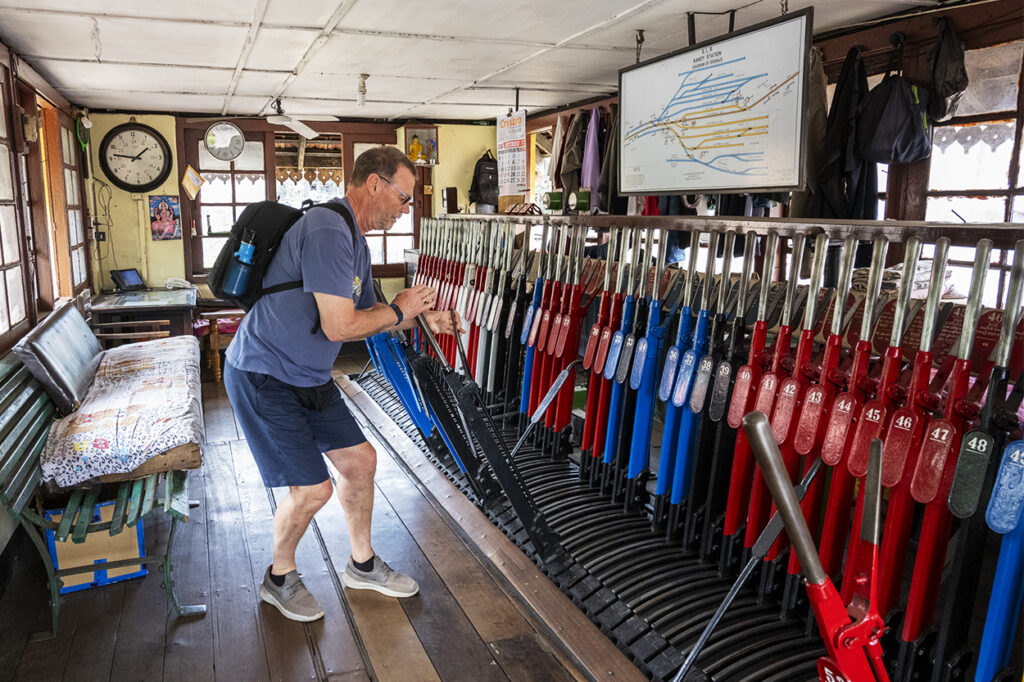
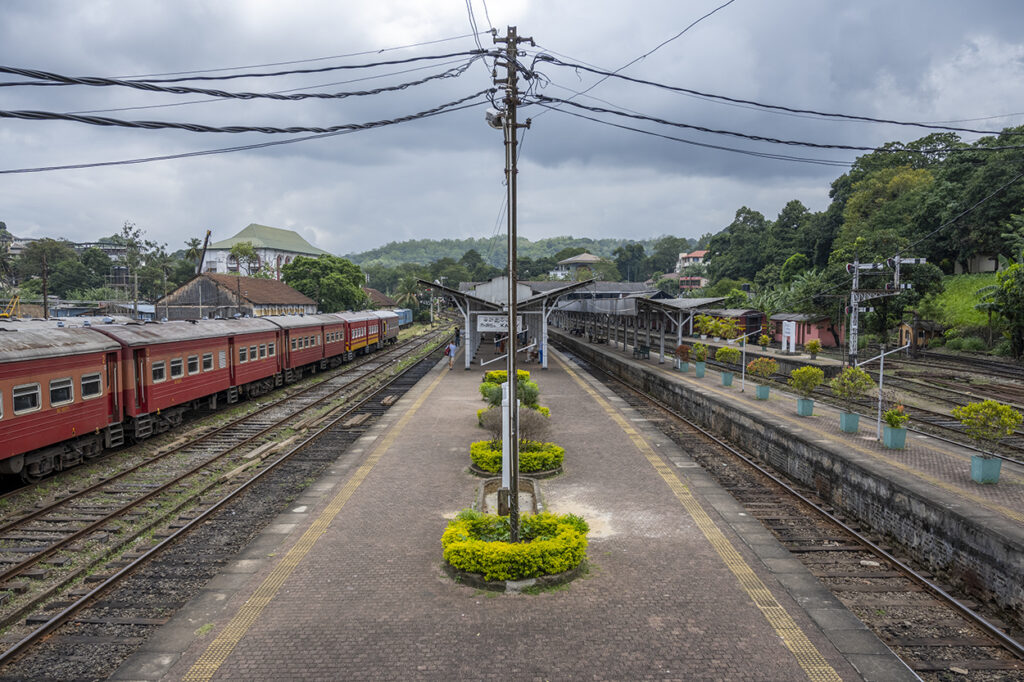

The journey was to take slightly more than four hours over a distance of 196 km with an increase in elevation of 1400m. Our first class tickets meant a welcome air conditioned carriage, although a lot of the time was spent at the open door admiring the spectacular views as they unfolded after every twist and turn of the rails.


I was promised a view of a waterfall, the name of which I didn’t take note of. Jostling for position at the door was a bit scary, but I managed to grab a couple of disappointing shots.
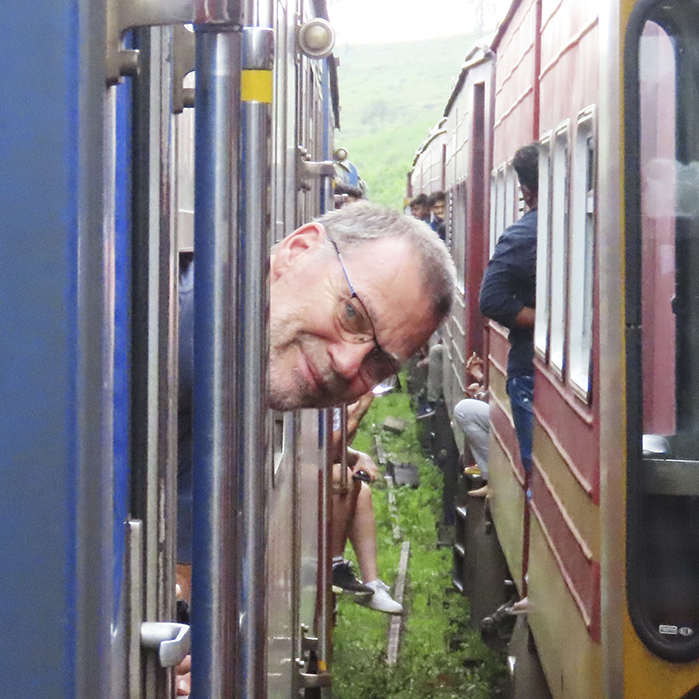
Apparently, it is the ‘done thing’ to have a photo leaning out of the train door, so this created some frenetic group activity at one of the small stations (where it was safer with the train stopped).
The gradual increase in elevation brought slow relief from the hot humid atmosphere of the lower altitudes. It is for this reason that Nuwara Eliya is nicknamed ‘Little England’. This climate was deemed to be ideally suited to the British occupants and to tea growing in preference to failed attempts at coffee production.
Tea picking
On the morning after arriving at Nuwara Eliya, our coach took us to a tea plantation. We were instructed on how to pick tea leaves (the top two leaves plus a bud) and subsequently let loose on a small part of an over picked section of plantation where there were ‘slim pickings’.
Working six days per week, the tea pickers, all women, have a target of 20 kilos of leaves per day – that is two full baskets such as the ones we were wearing. While they are getting on with this very hard work, the men maintain the plantation infrastructure and work in the tea factory. It is a very local industry with most workers living very close to the plantations.
In the 30 minutes we were there I don’t think I even made 100 grams.
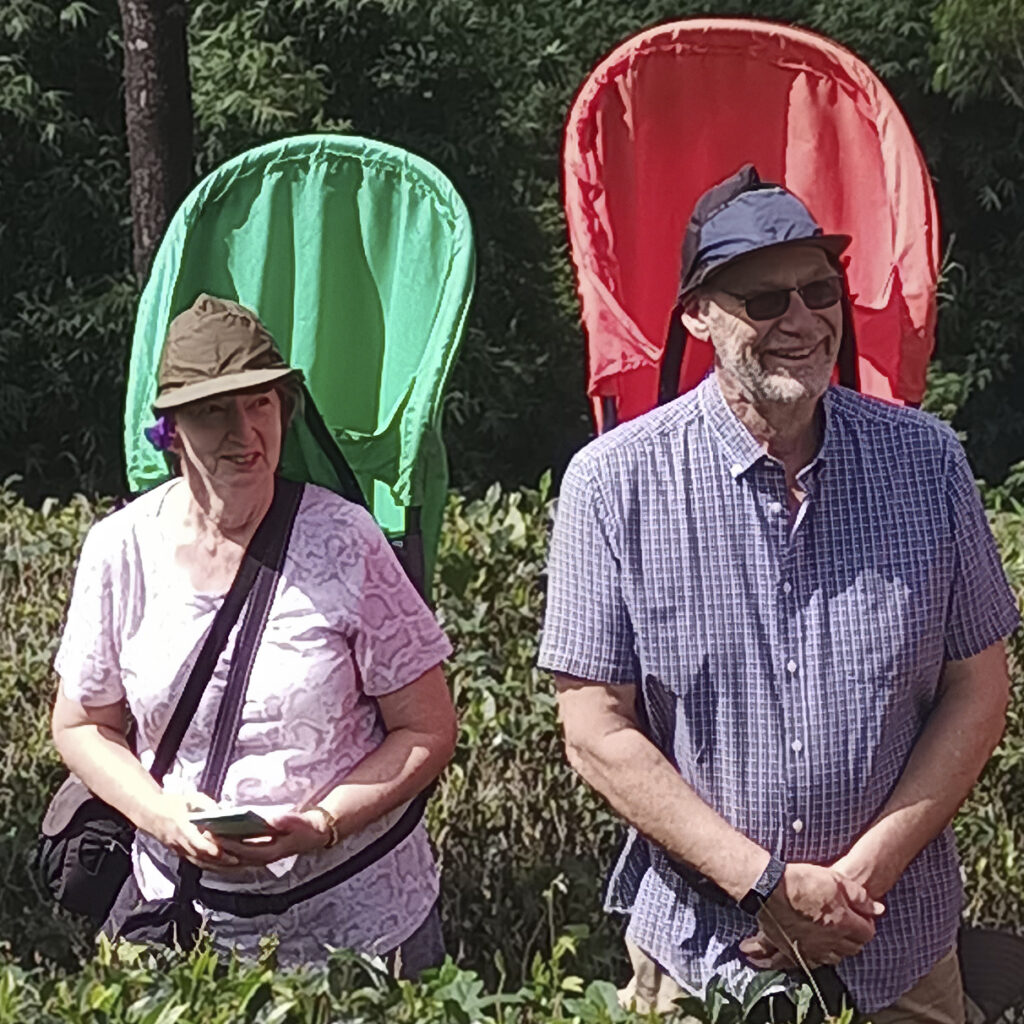
After the group consolidated our pickings into a small pile, we were guided through the various stages of factory production including drying, sorting and packing. The morning was rounded off with sampling four varieties of pure Ceylon tea. The flavour of pure Ceylon tea is so much better than the run of the mill tea bag bought in Australia, so, at the factory shop, we bought a few packs of tea to bring home.
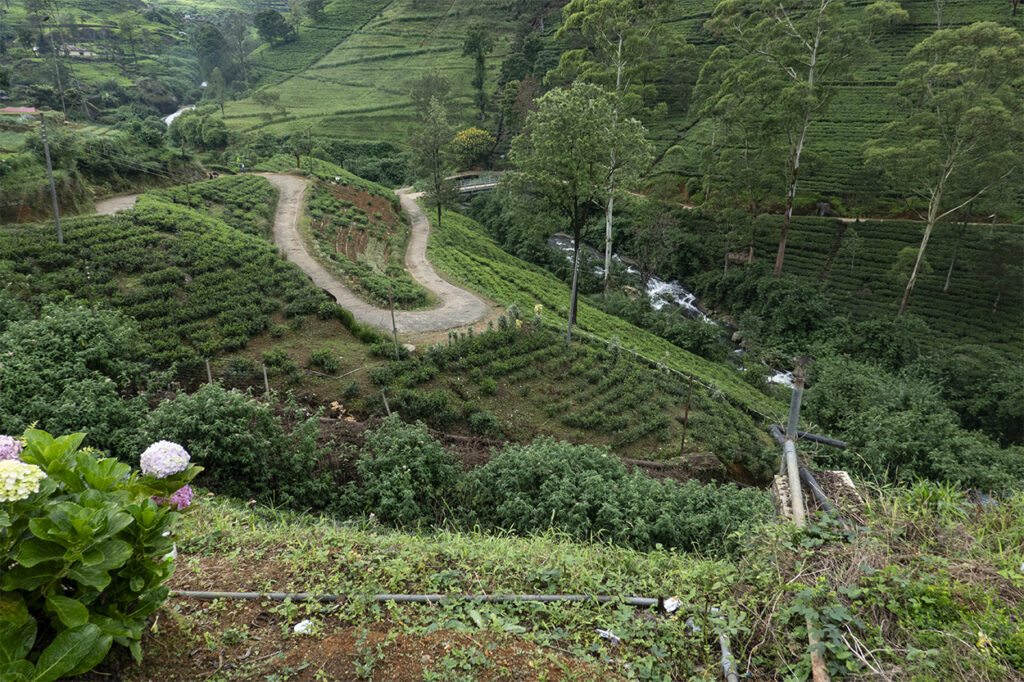
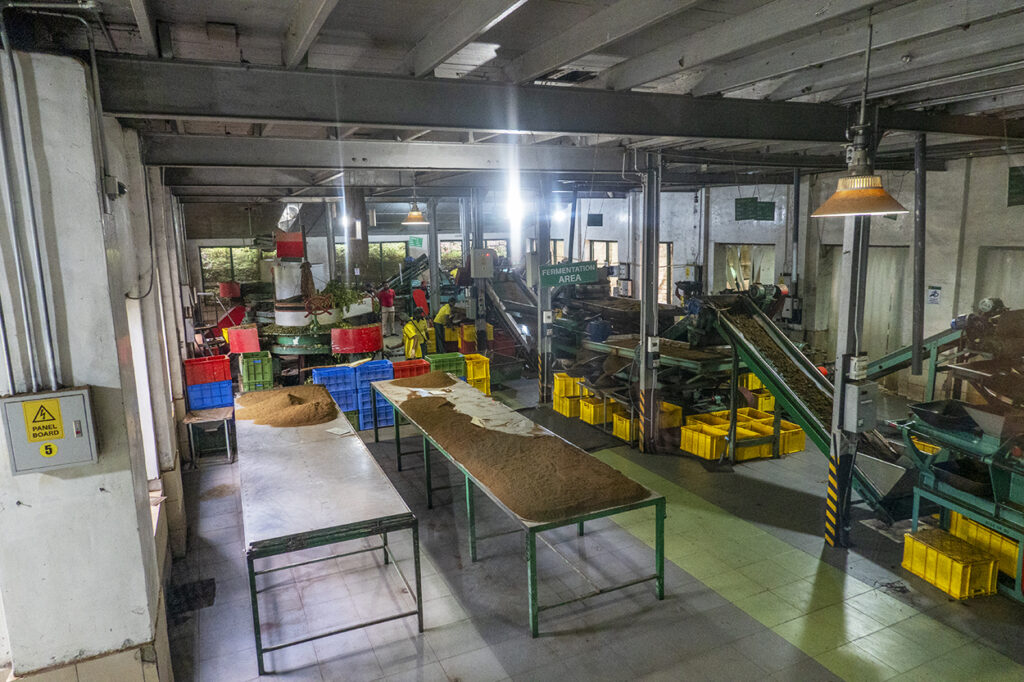
Galle Fort
The morning after the election of the new popular president, Anura Kumara, the government had decreed a curfew. The potential trouble, that I guess they were anticipating, never eventuated, but it meant that the only visitors to the tourist attractions were from overseas.
Our group was therefore delighted to visit Galle Fortress without the hordes of people getting in the way of photographs.
Galle Fortress was first built in 1588 by the Portuguese during their occupation of the country and subsequently fortified by the Dutch in 1649 during their occupation. Properties inside the extensive fortress are currently owned and occupied by government departments and privately by many Dutch people. The fort features many significant buildings including, the lighthouse, the New Orient Hotel and the prominent clocktower. Many of the buildings were damaged by the 2004 tsunami and have subsequently been restored by the Sri Lankan government with financial support from the Netherlands government. In 1988 it was designated as a World Heritage Site.
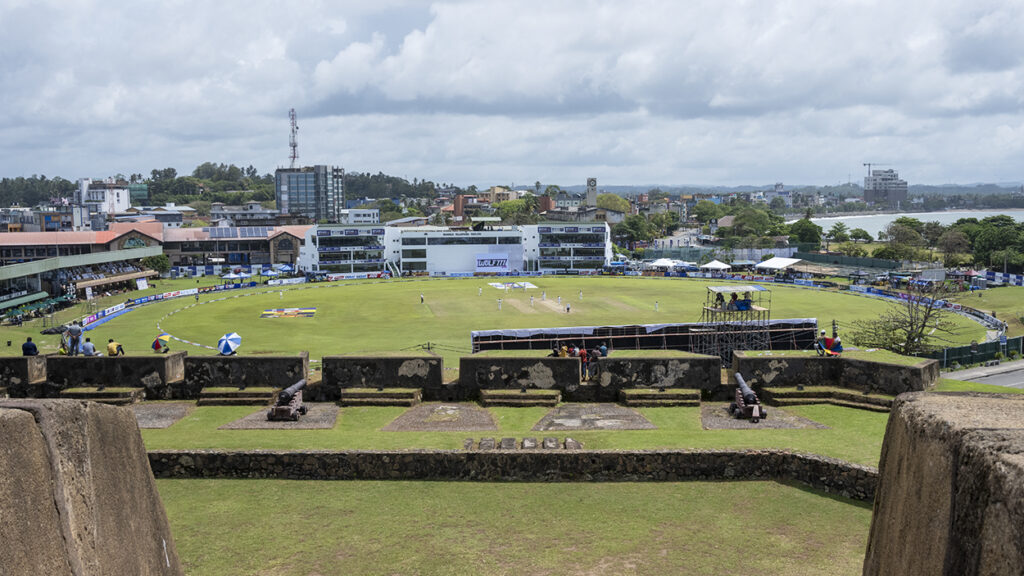
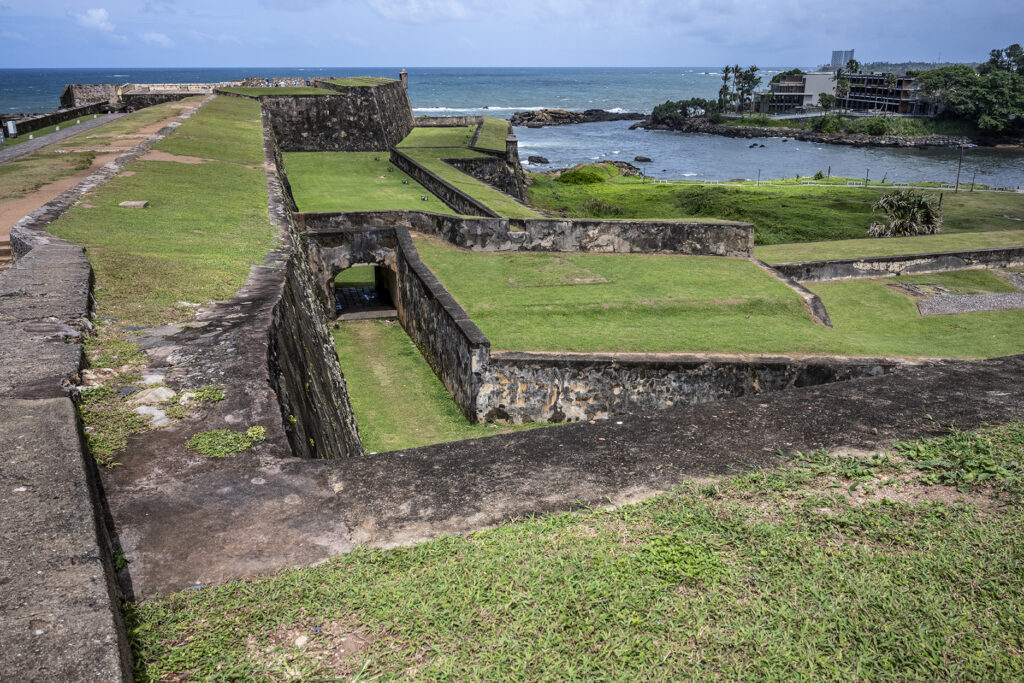

Our visit took us round the perimeter of the fort to view the gun emplacements and many of the building mentioned above. It happened to be one of the days of the Sri Lankan v New Zealand cricket match, the ground being overlooked by the fort. Despite the curfew, the match was in full swing, but with very few of the usual cricket mad locals spectating.

Towards the end of the visit, we walked past the Dutch Hospital, across the Court Square with its huge Banyan Tree and through the gate at the maritime museum.
Wildlife safaris
The other highlights were three wildlife safaris at Yala and Bundala National Parks. As I have much to describe and many photos, they deserve a dedicated article which I will post soon.
